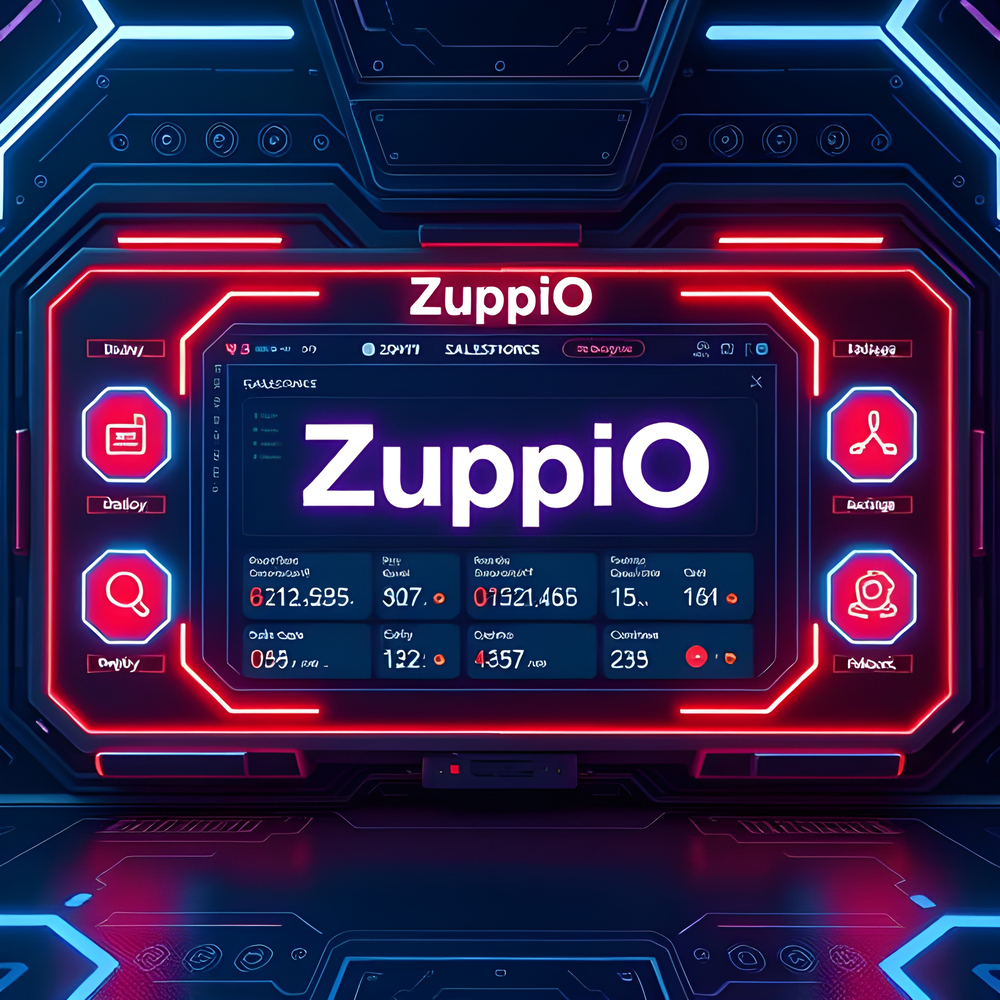5 Use Cases for ZuppIO in Large Salesforce Projects

As Salesforce projects grow in size and complexity, managing deployments, metadata, and multiple environments becomes increasingly difficult. Manual processes, CLI tools, and fragmented automation often result in slow releases, human errors, and poor visibility across environments. ZuppIO is a DevOps automation platform purpose-built for Salesforce teams working at scale. This article presents five real-world use cases that demonstrate how ZuppIO helps large teams streamline deployment workflows, automate repetitive tasks, and reduce release risks.
1. Multi-Org Metadata Deployment Without Scripts
One of the biggest challenges in large Salesforce programs is deploying metadata consistently across multiple environments. Traditional methods involve scripting or manual steps in tools like Workbench or Change Sets. These approaches are time-consuming and error-prone when dozens of sandboxes and production orgs are involved.
ZuppIO allows teams to configure reusable visual Jobs with deployment Steps that execute consistently across multiple orgs. Metadata ZIP files, component bundles, or package versions can be deployed simultaneously, with individual logs and success/failure statuses tracked per org.
Key benefits:
- Centralized deployment execution across 10–100+ orgs
- Visual execution with no scripting required
- Validation and rollback built-in
- Detailed logs and status per org
- Compatible with all metadata types supported by Metadata API
For teams managing regional instances, client-specific sandboxes, or program-level org hierarchies, this model replaces weeks of manual coordination with a single, controlled operation.
2. CI/CD Integration With Git and Webhooks
Enterprise Salesforce development often involves integrating multiple tools — Git for version control, Jenkins or GitHub Actions for pipelines, and CLI scripts for deployment. Maintaining this toolchain can become cumbersome, especially for teams without deep DevOps expertise.
ZuppIO simplifies continuous deployment by integrating directly with Git providers like GitHub, Bitbucket, and GitLab. It supports triggering Jobs from Git webhooks, allowing updates to be deployed automatically based on branch activity or pull request events.
Git-triggered automation features:
- Webhook listeners for automatic Job execution
- Branch-based Job targeting
- Visual interface for job status and logs
- Revert options linked to the deployment history
This enables lightweight deployment pipelines for Salesforce metadata without maintaining separate automation scripts. Developers push to Git, and ZuppIO handles the deployment using preconfigured Jobs — no Jenkins or CLI required.
3. Managed Package Lifecycle Automation for ISVs
Independent Software Vendors (ISVs) working with AppExchange often manage hundreds of customer orgs. Releasing a new version of a managed package requires coordinated rollouts, permission updates, and post-install configurations. Doing this manually or via support cases is not scalable.
ZuppIO supports package installation, updates, and uninstall operations at scale. ISV teams can define a deployment Job that targets customer orgs, validates package presence, and installs the correct version with predefined parameters.
ISV-centric automation includes:
- Version-aware package installation or upgrade
- Permission Set and License Assignment
- Post-install Apex and configuration steps
- Safe uninstall operations with logs
- Batch deployment to large numbers of orgs
This allows ISV teams to push updates across all customer environments in minutes, rather than managing each deployment separately. Audit logs ensure traceability, while validation prevents mismatched versions or install failures.
4. Post-Deployment Automation at Scale
In most Salesforce workflows, deployment is just the beginning. Once metadata or packages are delivered, teams often need to execute follow-up actions — assigning permissions, running Apex code, inserting configuration records, or triggering flows.
ZuppIO enables post-deploy automation by supporting sequential Steps within a Job. After deploying metadata or packages, the same Job can execute follow-up commands across all target orgs without requiring additional scripts or tools.
Typical post-deploy actions with ZuppIO:
- Run Apex across orgs (initialization, data fixes, setup)
- Update metadata-driven configurations
- Assign profiles or permission sets
- Trigger flows or post-install handlers
- Verify results via logs and checkpoints
This use case eliminates the gap between “deployed” and “usable.” It ensures that deployments are not just technically complete, but functionally ready across all environments.
5. Safe Rollback and Deployment Auditing
Large Salesforce teams must operate with accountability. Failed or partial deployments, especially in production orgs, can lead to business disruption and compliance risks. Standard Salesforce tools lack robust rollback or audit capabilities, which makes recovery slow and manual.
ZuppIO introduces a rollback mechanism — the Revert Step — which allows teams to undo changes deployed in a Job. Combined with execution logs and audit trails, this helps teams build safer, reversible deployment workflows.
Rollback and audit features:
- Revert Step available in visual Job configuration
- Per-org rollback with status tracking
- Execution logs for every deployment
- User-level audit trail (who ran what, when, where)
- Documentation support for compliance reviews
With rollback in place, large teams can deploy with greater confidence. It also supports internal and external auditing with traceable release records.
Note on Additional Capabilities
While ZuppIO supports webhook-based triggers, Git integration, and rollback, other features such as Job scheduling, job templates, tag filtering, or a public API are either not available or not yet documented. Please contact the ZuppIO team directly for updates on planned features or advanced integrations.
Conclusion
ZuppIO is not a replacement for Git or CLI — it’s an orchestration layer that brings scale, safety, and clarity to Salesforce deployments. For large Salesforce programs involving multiple teams, environments, and packages, ZuppIO serves as a centralized command center for DevOps activities.
From mass metadata deployment and Git-based automation to ISV package rollouts and rollback recovery, ZuppIO simplifies complex workflows while ensuring visibility and control. In environments where reliability and speed are non-negotiable, ZuppIO becomes a foundational part of the DevOps toolkit.